Portrait as Propaganda - Steve Smith
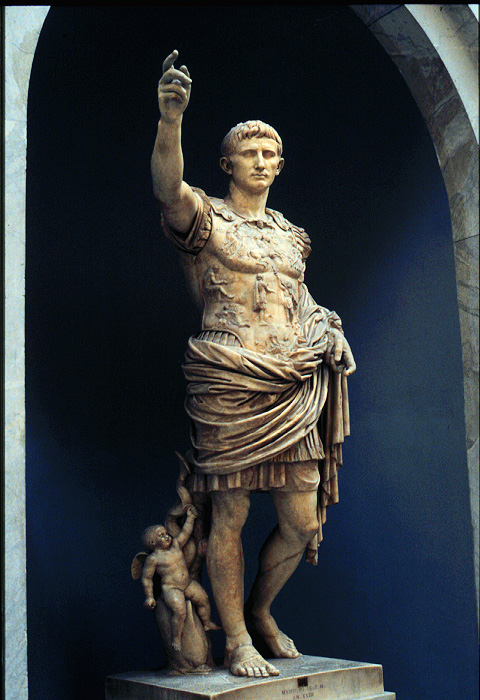 Augustus of Prima Porta
Augustus of Prima Porta |
If all the extant statues of Roman rulers teem with
adulation, does that mean that there were no negative portrayals?
If there were, why do none of them survive? To answer these questions,
one has only to remember just what kind of state the Roman state
was. The emperors especially, but even the consuls had the extensive
ability to stamp out any resistance to their rule. Would-be political
satirists would not dare risk their lives to take ideological
shots at rulers. Also, as there was no organized publishing in
Rome, art negatively depicting a ruler would have to circulate
in its original form. Not only would it be drastically less effective
than modern mass media, but the very personal nature of having
a single extant copy left little room for anonymity. The much
safer and more lucrative approach for the ancient artist was to
seek governmental patronage. |
| The modern political artist lives in a much safer
time. American political cartoons have lampooned American leaders
since before the American Revolution. Thomas Jefferson was a prime
example of a target for cartoonists: |
Jefferson attempting to destroy the constitution:
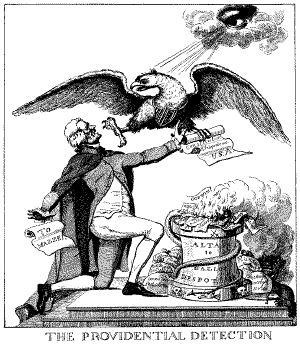 Artist Unknown
Artist Unknown
|
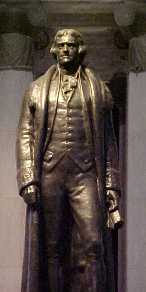 by Rudolph Evans
by Rudolph Evans |
This statue, the centerpiece of the Jefferson memorial,
has quite the opposite effect of the above cartoon. Jefferson
is standing up here, looking up as would any political idealist.
In his left hand he is holding the Constitution, with no apparent
intention of burning it. This statue is only about sixty years
old; clearly it was not commissioned by Jefferson or someone working
to further the interests of Jefferson. Even though Jefferson is
still a controversial figure in American history, the complimentary
statue reinforces our tendency to revere the founding fathers.
Perhaps the answer lies in the form; making an insulting monument
defeats the purpose of making any monument at all. Nonetheless,
it is interesting that Jefferson would not have approved the use
of state funds for any self-glorifying art, as opposed to Augustus
et al. who certainly would and did. |
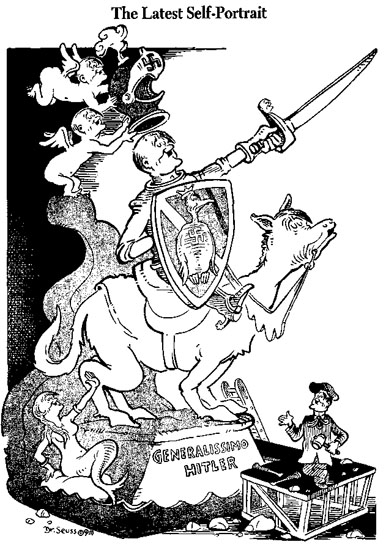
by Theodor Seuss Geisel
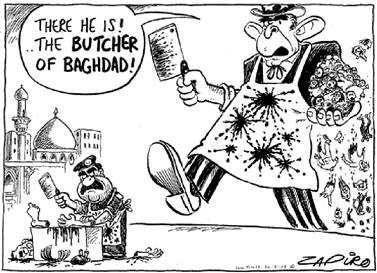
by Jonathan Shapiro
Reference
Hess, Stephen and Kaplan, Milton. The Ungentlemanly
Art: WWII Editorial Cartoons of Theodor Seuss Geisel. New York:
MacMillan, 1999.
Thomas C. Blaisdell, Jr., Peter Selz, and seminar. The American
Presidency in political cartoons, 1776-1976 . Berkeley: University
Art Museum, 1976.
next
| contents 2004 | home
|